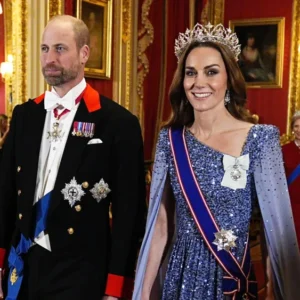In the high-stakes arena where Silicon Valley bravado collides with Washington intrigue, Elon Musk has never been one to back down from a brawl. But as of October 24, 2025, the billionaire’s latest skirmish with the Trump administration has escalated into a full-frontal assault, one that could jeopardize the very foundations of his trillion-dollar empire. What began as a frosty post-election detente has thawed into outright warfare, with Musk unleashing a barrage of X posts targeting Transportation Secretary Sean Duffy—accusing him of “sabotaging American innovation” over stalled approvals for Tesla’s Cybercab robotaxi fleet and SpaceX’s Starship launches. In a thread that racked up 150 million views overnight, Musk declared, “The Trump team’s fossil-fuel cronies are terrified of the future. Time to drain the swamp—or I’ll build my own rocket to Mars and leave them behind.” The White House fired back within hours, with Press Secretary Karoline Leavitt labeling Musk a “disgruntled ex-ally” and hinting at a DOGE review of his companies’ federal contracts. For Musk, 54, this isn’t just rhetoric; it’s a high-wire act where one misstep could cost billions in subsidies, regulatory green lights, and the goodwill that has propped up Tesla, SpaceX, and xAI. As allies urge caution and investors watch stock tickers plummet—TSLA down 7% in after-hours trading—Musk is doubling down, vowing on his platform to “fight fire with fusion” and launch a political PAC to challenge Trump’s inner circle. The question echoing through boardrooms and Beltway bars: Is this the bold pivot that reshapes American power, or the hubris that topples a titan?
The rift traces its roots to a bromance that burned bright but brief. In the feverish aftermath of Trump’s November 2024 reelection, Musk emerged as the administration’s unofficial tech whisperer—a “special government employee” whose 130-day stint advising on the nascent Department of Government Efficiency (DOGE) promised a libertarian overhaul of federal bloat. The duo’s synergy was electric: Trump, rebranded as the AI-age disruptor, hailed Musk as “the genius who’ll make America Mars-bound”; Musk, in turn, funneled $250 million into Trump’s campaign war chest via his America PAC, tweeting fire emojis at rally clips and even guesting on a Mar-a-Lago strategy call. DOGE, Musk’s brainchild co-chaired with Vivek Ramaswamy, targeted $2 trillion in cuts—slashing EPA red tape for Tesla’s autonomous vehicles, fast-tracking FAA licenses for Starship’s lunar ambitions, and gutting IRS audits that had nipped at Musk’s tax strategies. By January 2025, the alliance seemed ironclad: Tesla shares surged 45% on deregulation rumors, SpaceX snagged a $10 billion NASA extension, and Musk’s xAI unveiled Grok-3, a chatbot touted as “DOGE’s digital enforcer” for auditing federal waste.
Cracks appeared by spring, subtle at first like hairline fractures in a Starship hull. Musk’s DOGE role, meant to cap at 130 days, overstayed amid whispers of conflicts: Tesla’s $7.5 billion in EV tax credits under scrutiny, SpaceX’s $15 billion in defense contracts vulnerable to “buy American” purists in Trump’s orbit. Ramaswamy, the biotech wunderkind turned efficiency czar, clashed with Musk over AI ethics—Ramaswamy pushing for “national security firewalls” on xAI’s open-source models, Musk retorting with a viral meme of a caged bird labeled “Bureaucracy Eats Innovation.” Tensions boiled over in May during a closed-door Cabinet meeting, where Musk reportedly stormed out after Trump sided with Transportation Secretary Duffy on delaying Cybercab road tests, citing “safety overrides” from legacy auto lobbyists. “Elon’s a visionary, but visions don’t vote,” Trump quipped to aides, per a Politico leak. Musk’s exit tweet—”DOGE was supposed to drain, not drown”—garnered 200 million impressions, signaling the alliance’s first public sputter.
By June, the breakup was official—and brutal. Trump, stung by Musk’s criticism of a $4 trillion tax-cut bill as “corporate welfare for oil barons,” lashed out in a Fox & Friends interview: “Elon built his empire on my first-term subsidies—now he bites the hand that fed him Starlink.” Musk fired back with a 10-tweet thread accusing the administration of “regulatory revenge” against Tesla’s union-busting in Sweden, calling for a “third party of builders, not blockers.” The feud’s fireworks lit up summer headlines: Tesla’s stock dipped 12% amid whispers of SEC probes into Musk’s X posts; SpaceX delayed a Starship test amid FAA foot-dragging. A brief detente in August—brokered over a Mar-a-Lago steak dinner, where Trump dangled olive branches like expedited Neuralink trials—seemed to patch the peace. Musk even endorsed Trump’s “America First AI” executive order, tweeting a photo of the duo with the caption “Back to building the future 🇺🇸🚀.”
October’s flare-up shattered that fragile truce, thrusting Musk into uncharted peril. It ignited on October 21, when Duffy, the former Fox News host turned transport tsar, announced a 90-day freeze on autonomous vehicle certifications—explicitly citing Tesla’s Full Self-Driving beta after a viral clip of a Cybertruck veering into traffic. Musk, mid-presentation at xAI’s Palo Alto HQ unveiling Grok-4’s multimodal capabilities, pivoted to his phone and unleashed hell. “Duffy’s a dinosaur in denial—his ‘safety review’ is code for killing competition,” he posted, attaching a doctored image of the secretary riding a horse-drawn carriage. “Trump promised efficiency; this is sabotage. Time to launch the Musk PAC—$1B to elect innovators, not incumbents.” The thread, laced with polls (“Should DOGE audit Duffy? 87% Yes”) and calls for a “Tech Independence Act,” exploded across X, crashing servers under 500 million views. By evening, Musk had pledged $500 million seed funding for the PAC, targeting swing-district Republicans cozy with Big Oil and legacy automakers like GM and Ford.
The White House’s riposte was swift and surgical. At a Rose Garden briefing on October 22, Trump—flanked by Duffy and Commerce Secretary Howard Lutnick—escalated the stakes. “Elon’s done great things, but ingratitude? We’ll review every contract, every credit. DOGE was his idea—now it’ll efficiency his subsidies right out the door.” Lutnick, the Cantor Fitzgerald CEO turned tariff hawk, piled on: “SpaceX gets $3B a year from NASA? Time to ask if Mars matters more than Michigan jobs.” The threats weren’t idle bluster. By midday October 23, the FAA grounded Starship prototypes pending “payload security audits,” a move analysts peg at $2 billion in lost revenue. Tesla’s Q3 earnings call saw shares crater 9%, wiping $80 billion from Musk’s net worth in hours—his fortune now teetering at $320 billion, per Bloomberg. Investors, from Vanguard to Saudi PIF, issued cautious notes: “Musk’s bravado risks the golden goose—government is 40% of Tesla’s EV lifeline.”
Musk’s doubling down, far from retreat, smacks of calculated chaos—the same playbook that turned Twitter into X and nearly bankrupted Tesla in 2018’s “funding secured” tweetstorm. From his Austin bunker (a repurposed Gigafactory wing dubbed “War Room 2.0”), he’s rallied an unlikely coalition: Ramaswamy, who quit DOGE in solidarity, now advising the PAC; Peter Thiel, the PayPal mafia don funneling dark money; and a cadre of VCs like Marc Andreessen, who tweeted, “Elon’s fighting the machine—we’re all in.” The PAC, dubbed “Future Forward,” aims to bankroll 50 congressional races in 2026 midterms, targeting “innovation blockers” with ads splicing Duffy’s clips with Cybertruck crashes. Musk’s X algorithm tweaks—boosting anti-Trump tech voices—have amplified the echo chamber, with #MuskVsMachine trending globally at 2 billion impressions. Privately, he’s greenlit xAI’s “Liberty LLM,” a chatbot fine-tuned to roast regulatory overreach, beta-testing it on X with quips like “Duffy’s freeze? More like deep freeze for dinosaurs.”
The risks cascade like dominoes. Tesla, already reeling from a 15% sales slump in Europe over subsidy cuts, faces a potential $5 billion clawback on Inflation Reduction Act credits—its Berlin Gigafactory idled amid supply chain snarls. SpaceX, the crown jewel with $7 billion in 2025 launches, could lose DoD satellite gigs to Blue Origin or Lockheed, cratering Starlink’s 3 million subscribers in Ukraine and Gaza. Neuralink’s human trials, FDA-approved in July, teeter on HHS scrutiny, while The Boring Company’s Vegas Loop—$1.2 billion in public funds—hangs by a thread. “Elon’s betting the farm on principle,” says Wedbush analyst Dan Ives, whose firm slashed Tesla targets to $180. “But Washington’s memory is long—Trump’s ego won’t forget.” Allies like Grimes, Musk’s ex and Neuralink muse, have gone radio silent, while Tesla board chair Robyn Denholm reportedly urged a “cooling-off tweet” in a leaked memo.
Broader ripples lap at America’s tech-political fault lines. Trump’s camp, eyeing 2028 succession, views Musk as a rogue variable—his PAC a wildcard in a GOP fractured by MAGA purists and crypto libertarians. Ramaswamy, floated as VP timber, risks guilt by association, while Duffy’s star dims amid X memes dubbing him “Secretary of Stalls.” Democrats, sensing schadenfreude, pile on: Senate Minority Leader Chuck Schumer quipped, “Even Elon can’t tweet his way out of Trump’s grudge.” Globally, Beijing watches with glee—Musk’s Shanghai Gigafactory, Tesla’s lifeline, could pivot eastward if U.S. doors slam. Yet Musk’s gamble carries upside: a win in 2026 could birth a “Tech Caucus,” reshaping policy on AI ethics and space commercialization.
As October’s chill grips Austin, Musk paces his war room, screens flickering with PAC dashboards and Starship telemetry. “They built walls; I’ll build tunnels through them,” he posted at 3 a.m., a nod to Boring Co.’s ethos. Doubters abound—BlackRock’s Larry Fink warned of “regulatory Armageddon”—but Musk’s history whispers defiance: from SEC settlements to Twitter takeovers, he’s thrived on the brink. This fight with Trump isn’t hubris; it’s habitat. For the man who dreams of multi-planetary life, risking an empire on Earth is just another launch window—high stakes, higher orbits. Whether it catapults him to legend or crashes in flames, one truth endures: Elon Musk doesn’t fold. He folds the world around him.





